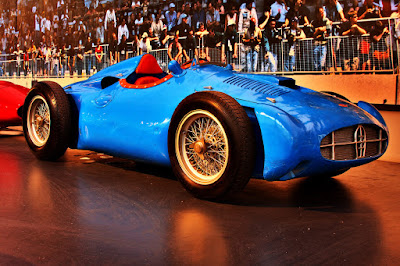My mother appears to be recovering slowly
but steadily from her recent injury and subsequent illness, which is a source
of relief to the whole family, though the time I spend commuting to Edinburgh
to visit her in hospital is unlikely to reduce for a few weeks yet. So the
exact timing of the next step is uncertain at the moment, but the outlook is much
more promising.
As part of this full-time involvement in
hospitals and matters connected with convalescence and disability, we’ve been
doing a lot of online research into the darker mysteries of things like nursing
homes (which I hope we will not require for a while), and the delicate matter
of who pays for what, in which circumstances. I would describe this field of
study as necessary, rather than interesting in its own right.
I am reminded of a former work colleague of
mine, Lawrence, who once had a lot of trouble trying to sort out
adequate arrangements for his elderly father.
Years ago, Lawrence was my boss for a while
– we got on unusually well, since we were both rather misfit members of a
profession which is noted mainly for its druidic tendency to self-obsession,
and for a deep suspicion of anything which offers even a hint of creativity or
humour. Lawrence and I didn’t really fit the profile, so we got on famously
(with each other – I can’t promise that we necessarily got on with the rest of
the profession).
His father was a retired police officer, a
widower – showing clear signs of early dementia, but determined (to the point
of violence, if necessary) to retain his independence. When I first met Lawrence,
his dad had recently moved in with them, since he was becoming unsafe in his
own house. It was not going well. There was a series of harrowing incidents
which caused Lawrence’s wife a lot of stress, and which resulted in some rather
odd phone messages – here are a few that I recall:
(1) The old guy (Bob, his name was) spilt
tea on the landing carpet, and set about sorting things out by lifting the
carpet and putting it – complete with tacks and underfelt – in the washing
machine, which destroyed both items. Interestingly, the insurance company refused to pay up for
damage caused by a deranged family member.
(2) He broke the lock on the bathroom door,
but rectified this by wedging the door shut, while he was in there. Since he
could not remember what he had done to achieve this, they had to break open the
door to rescue him.
(3) Ah yes - the episode of the Wall Clock.
Old Bob took exception to a large, antique, wall-mounted clock in the hall – he
claimed that its chiming kept him awake. When they protested that it had not
chimed for years, he reckoned that it was the ticking which disturbed him, so
they stopped winding it, and it ticked no more. Still not satisfied, Bob took
it down from the wall, about 2 o’clock one morning, and threw it out of the
front door, down the steps into the garden. That showed it.
(4) They started to get complaints that Bob
was shouting abuse out of the upstairs window at passers-by.
At this point, Lawrence’s wife threw in the
towel, and the old man went to live with Lawrence’s younger sister, who worked
from home and would be better able to keep an eye on him.
It all started very promisingly. Bob took a
liking to his daughter’s dog, and started getting up early, washing and shaving
and polishing his shoes, and taking the dog for long walks. They could not
believe the improvement in his general behaviour and his awareness, but it was
too good to last. After a few days, the police arrived to tell them that Bob
and the dog were at the police station, since he had been apprehended for exposing
himself outside the local primary school.
Around this time I was transferred to
another job, in a different part of the organisation – different building,
different part of the city, and I lost touch with Lawrence, who was desperately
trying to get his dad into a residential home, and was getting nothing but
grief from the old guy in return.
Time passed – as it does – and some years
later I bumped into Lawrence at lunchtime in one of the Company’s numerous
canteens – I knew that he had had some health problems, and he didn’t look
wonderful, but I was pleased to meet him and we had lunch together.
We spoke of this and that, and eventually I
brought up the fact that last time I had met him he had been having a lot of
trouble getting his father into a nursing home. I said that I hoped things had
worked out well, and asked how his dad was doing.
“Still dead,” said Lawrence, with a huge grin.























